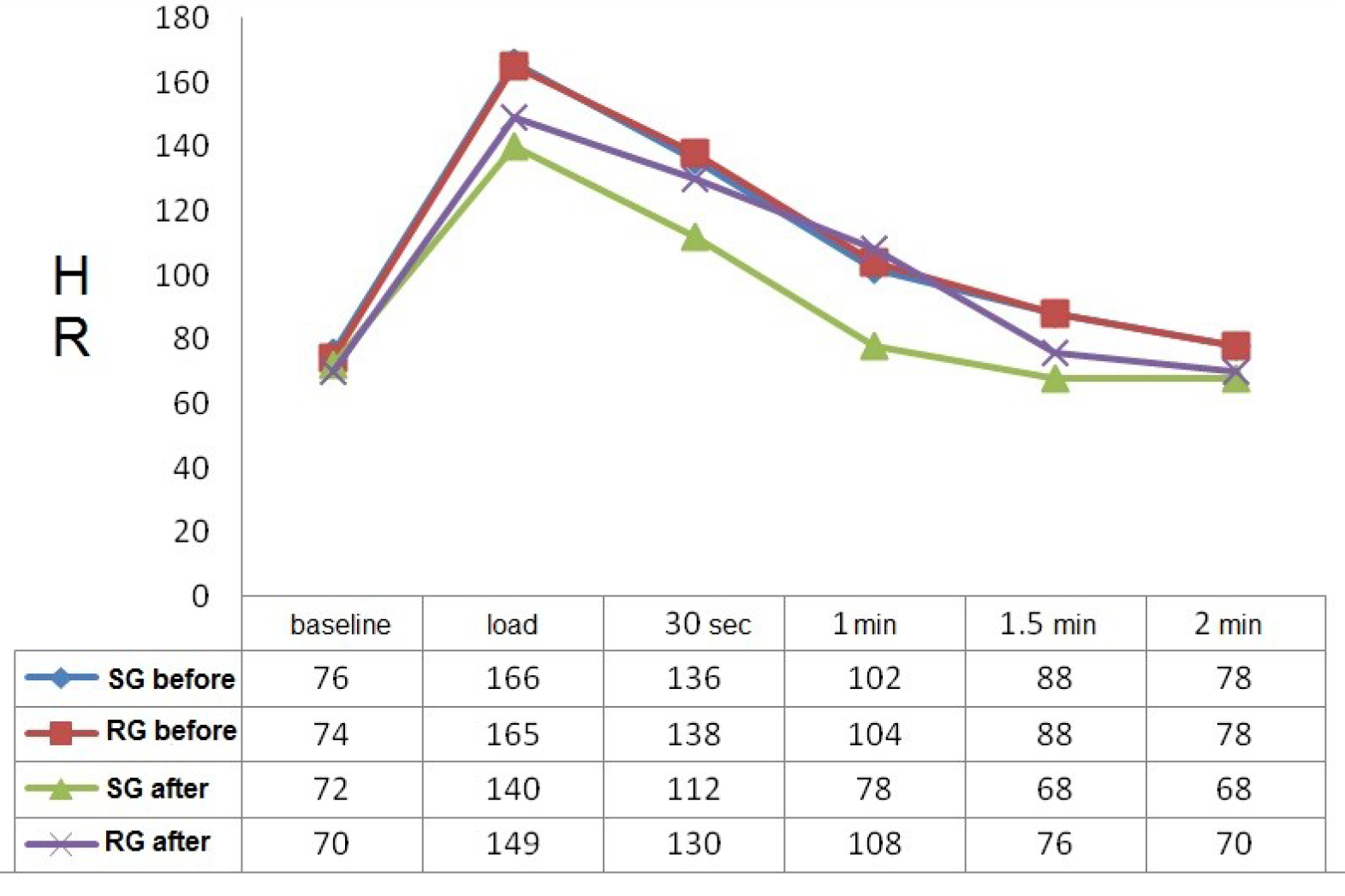Effects of slide aerobics on female students' functional state and physical fitness
Фотографии:
ˑ:
Z.S. Zemlyakova1
Dr.Hab., Professor V.G. Shilko1
1National Research Tomsk State University, Tomsk
Keywords: physical development, functional state, female students, physical education, university, slide-aerobics.
Introduction. Fitness aerobics is currently among the most popular types of motor activity of university students. Holding a special place within its structure, slide-aerobics is becoming even more popular among female students; recently it has been successfully introduced into the academic Physical Education discipline [1]. And it is no wonder, as slide-aerobics allows for easy dosing of physical loads both by volume and intensity, promotes harmonious development of physical qualities, improves physical working capacity, helps to build a beach body and increases self-confidence. Slide-aerobics is particularly important for the development of lower limbs, since it actively uses lateral (i.e. side) motion, which requires a considerable muscular tension of the adductor and abductor muscles of the thigh [3]. Another specificity of slide-aerobics is that it does not include jumping or hopping exercises, which makes it less traumatic, and thus, more accessible and attractive for a wide range of trainees.
Objective of the study was to analyse the effects of slide-aerobics on the female students’ functional states and physical fitness under the academic Physical Education curriculum.
Methods and structure of the study. Subject to the experiment were 54 first-year female students of 17-19 years of age from 9 university departments qualified with the main and special preparatory health groups. The females were pre-qualified for the specialization "Aerobics" and divided into two groups - Reference (RG) and Experimental (EG). The RG subjects were engaged in classical fitness aerobics, and those of the EG - in slide-aerobics, in accordance with the developed methodology. The classes made up 2 days a week with 2-hour trainings per day during an academic year (from October 2016 through May 2017).
The study was designed to rate the efficiency of the experimental training model based on the female students’ physical fitness and functional state rates. We performed repeated tests (before and after the experiment) to test strength endurance of thigh muscles, speed-strength qualities, and long-term balancing ability (vestibular apparatus test) in special rotation test exercises customized to the slide-aerobic practices with a special emphasis on the cardiovascular system (CVS) functionality tests [5].
Strength endurance of the adductor muscles of the thigh was assessed using the following test exercise developed based on a simple basic slide-aerobics movement: from the starting position - standing at the center of the slideboard (feet together), with the legs always touching the surface, the subject was to slide the legs apart, at about 75-80 cm (half of the sliding surface), and together, back to the starting position. The result was determined by the number of movements performed, without reference to time, until the onset of fatigue.
Twists on a gymnastic bench (Hirtz et al., 1985). Standing on the narrow gym bench for 20 sec, the subject was to turn left and right as many times as possible without falling off. The result was determined by the number of turns performed in 20 sec, accurate to a halfturn. This test characterizes the females’ balancing ability during turning movements [4].
The CVS functionality test was developed based on the Kotov-Deshin test [2] and adapted to the experimental conditions. 12 NR TSU female students aged 18 to 20, from the track and field (middle- and long-distance race) and cross-country skiing national teams, were involved in the test design [5].
In order to determine the test duration and sliding tempo, the subjects were to perform the following task: they were to slide along the slideborad (from the ramp to the ramp), with the cardiac sensor attached, until their HR increased by 100% of the baseline value. At the same time, HR recovery period could not exceed 1.5-2 minutes. The CVS functionality test results were used as reference.
The functional state of the participants was assessed in the following sequence: after a 3-minute rest in the sitting position, we measured their pulse for 30 sec (×2). Then, the subjects were to perform the basic movement of the slideboard for 1 minute at the speed of one motor act (sliding from the ramp to the ramp) lasting 4 sec. Immediately after the control exercise, we measured their pulse for 15 sec. The pulse rate was then taken every 30 sec for 2 minutes until it was completely restored.
The level of development of speed-strength qualities of the female students was assessed by means of the control exercise "Standing long jump" [4].
The level of physical fitness and functional state of the female students of the RG and EG were assessed before (October 2016) and after the educational experiment (May 2017), in the morning, at the beginning of the working week, according to the individual schedule based on their menstrual cycles.
Results and discussion. The analysis of the data obtained revealed positive changes in both of the groups, both in terms of physical fitness (see Table 1) and CVS functionality test (see diagram 1).
|
Table 1. Female students’ physical fitness test results |
||||
|
Indicator |
Before the experiment |
After the experiment |
||
|
RG |
EG |
RG |
EG |
|
|
Strength endurance of adductor muscles of thigh (number of reps) |
20.9±14 |
20.8±12 |
21.1±18 |
64.1±16* |
|
Balancing ability (number of turns) |
9.8±1 |
9.5±0.5 |
10±1.2 |
11±1.4* |
|
Standing long jump (cm) |
168.1±30.0 |
170.0±26.0 |
178.4±26.8* |
186.0±26.7* |
|
HR under exercise |
165±36 |
166±40 |
149±40* |
140±28** |
|
* – p≤0.05.
|
||||

Diagram 1. HR variations in EG and RG under exercise before and after experiment
However, in the EG, we observed significant changes (p≤0.05) in all control exercises, while in the RG - only in the level of development of speed-strength qualities and functional state of the female students. At the beginning of the experiment, there were practically no differences between the functional test results in the RG and EG (marked red and blue in diagram 1): hypertonic type of CVS response to physical loads in both groups. Moreover, at the beginning of the experiment, both of the groups were characterized by a twofold increase in HR right after exercise, as compared to the baseline values, and more than 2 min of recovery time. After the experiment, HR in the EG was significantly higher than in the RG (p≤0.05), and the period of recovery to the baseline values reduced in this group to 1.5 min versus 2 min in the RG. Despite the differences between the indices, the type of response to physical load in both of the groups has not changed and was characterized as normotonic [5].
Therefore, training sessions conducted in two directions under the fitness aerobics program had a positive effect on the functional state of the female students, but in those engaged in slide-aerobics the health-improving effect was more pronounced versus those engaged in classical aerobics.
As opposed to the beginning of the experiment, those practicing slide aerobics were found to have significant changes in the level of strength endurance of the adductor muscles of the thigh after the experiment. The shift of the indicator in this control exercise equaled 43.3±14 cm. This almost threefold increase in strength endurance in the SG may be due to strenuous physical loads on the leg muscles during slide aerobics practices.
In the RG, the changes in the level of strength endurance were insignificant both before and after the experiment.
The comparative analysis of the research findings revealed significant changes in the level of dynamic balancing ability of the EG female students after the experiment. This can also be due to the specifics of slide-aerobics, a large number of twisting movements such as 90-degree turns, half turns (180°) and full rotations (360°) included in the slide-aerobics lesson plan, as well as due to the need to constantly move on the slippery surface of the slideboard, which contributes to formation of a beautiful leg muscle definition and improvement of coordination abilities.
Both groups were found to have significant changes in the level of development of their speed-strength qualities after the experiment. The differences were detected only in the shift values, which were also significantly higher in the EG than in the RG.
Conclusion. Slide-aerobics practices under the academic Physical Education discipline facilitate the core objectives of the academic physical education being attained with the relevant benefits for development of physical qualities and health improvement of the students.
References
- Bezhentseva L.M. Osobennosti metodiki zanyatiy po fizicheskomu vospitaniyu so studentkami Tomskogo gosudarstvennogo universiteta [Specific academic physical education curriculum methodology in Tomsk State University]. Vestnik Tom. gos. un-ta, 2011, no. 344, pp. 160-163.
- Egorova M.A. Funktsionalnye proby. Ucheb. posobie po kursu «Osnovam vrachebnogo kontrolya» [Functional tests. Manual for "Basics of medical supervision" course]. Bryansk: BSCOR publ., 2013, 48 p.
- Zemlyakova Z.S., Shil'ko V.G. Slayd-aerobika v fizicheskom vospitanii studentov [Slide aerobics in physical education of students]. Teoriya i praktika fizicheskoy kultury, 2016, no. 4, pp. 92-95.
- Lyakh V.I. Testy v fizicheskom vospitanii shkolnikov. Posobie dlya uchitelya [School Physical Education Tests. Teacher's manual]. Moscow: AST publ., 1998, 272 p.
- Potovskaya E.S., Kabachkova A.V., Shilko V.G. Primenenie analiza variabelnosti serdechnogo ritma dlya otsenki funktsionalnogo sostoyaniya organizma studentok [Study of heart rate variability to estimate female students' functional state]. Vestnik Tom. gos. un-ta, 2011, no. 346, pp. 140-143.
Corresponding author: vshilko@mail.ru
Abstract
Objective of the study was to analyse effects of slide aerobics on the female students’ functional state and physical fitness under the academic Physical Education discipline. Subject to the experiment were 54 first-year female students of 17-19 years of age from 9 university departments qualified with the main and special preparatory health groups. The study was designed to rate the efficiency of the experimental training model based on the physical fitness and functional state test rates. We performed repeated tests (before and after the experiment) to test the strength endurance of the thigh muscles; speed-strength qualities; and long-term balancing ability (vestibular apparatus test) in special rotation test exercises customised to the slide aerobics practices with a special emphasis on the cardiovascular system functionality tests.
The study data and analysis showed benefits of the slide aerobics training model as verified by the female students’ progress in the functional state and physicality rates under the academic Physical Education discipline; it may facilitate the core objectives of the academic physical education being attained with the relevant benefits for development of physical qualities and health improvement of the students.



